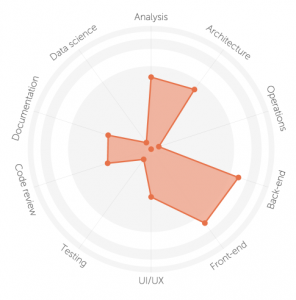An article recently written on NPR speaks to a ‘new’ trend in organizational compensation. What’s that trend? Apparently, companies are now not negotiating new hire or promotional salaries. Basically, here’s what we pay for this position, take it or leave it.
Do you believe this would work?
Here is more from the article:
When it comes to negotiating salaries, the research is pretty clear: women are less assertive than men. It’s one reason women who start their careers with a narrower pay gap see it widen over time.
Carnegie Mellon economics professor Linda Babcock, who studies the gender pay gap, says men are four times more likely to negotiate their pay. That keeps women at a disadvantage, though they’re not always aware of it.
“The standard now is that people don’t really know what each other earns, that some people negotiate and some people don’t, and so there’s tremendous inequities in salary,” Babcock says.
Here’s what I’ll say, Yes, we have inequities in salaries. Having non-negotiable salaries can help these inequities, but this isn’t a solution. The reality is organizations need flexibility to negotiate salary, especially when it comes to attracting hard-to-find talent. Organizations that take a hard stance on this, will lose in the talent attraction game.
What organizations need to do is have a policy on making quicker market compensation moves when they begin hiring in individuals, male or female, at higher rates than someone who might have started a few months prior. Most organizations are very weak on this practice, which causes most of the inequity.
You hire someone last year at $50K, and this year you hired someone into the same position, doing the same job, with a very similar resume at $58K. You now need to go back to your employee making $50K and give them an increase to $58K. This hurts, but it needs to be done. That’s why it is critical for your talent acquisition team to have great negotiation skills.
It’s not a $8K increase to your budget, it’s a $16K increase to your budget. Now, think about in terms of a company that has hundreds, or thousands of employees in the same situation. That $8K dollar negotiation can turn into hundred’s of thousands of dollars across the organization in market increases.
This is why most companies turn a blind-eye to market increases, and why so many organizations have pay inequalities. If females are less likely to negotiate higher salaries, and your organizaitons is going to ignore the difference, you’re going to have a growing problem that only gets worse the longer you ignore it.
I recently had a situation with a Fortune 500 client you completely gets this, and refuses to let it becomes a problem. We had a female candidate interview and get an offer. She wanted $47K. She was way under market for the position, and for the company. They knew she only wanted $47K, and they came back and paid her $63K! That was the value of her position to the organization and what similar people in her role were going to make, with her experience.
Like I said, this isn’t a salary negotiation issue. This is a do-you-want-to-do-the-right-thing organizational issue.
What do you think?

